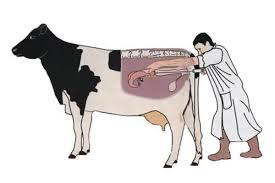Artificial insemination is the preferred method for introducing superior genes from disease-free individuals, thereby improving the production of offspring. It is also useful for breeding animals outside their natural breeding season after inducing and synchronizing estrus through photoperiod manipulation or hormone use.
This method allows for the production of adequate quantities of milk and balances labor requirements throughout the year. Semen used for out-of-season breeding can be frozen-thawed or liquid-stored if collected from ducks, rams, and cattle kept under artificial light to simulate the short days of the natural breeding season.
Although higher pregnancy rates may be achieved with trans-abdominal insemination compared to cervical insemination, the former method may be prohibited due to ethical considerations.
Read Also: How to know if your Catfishes are Underfed or Overfed
Procedure for Semen Collection Using an Artificial Vagina
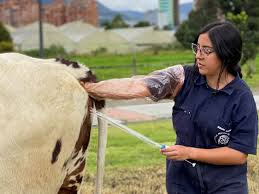
Preparation for semen collection is crucial. The standard service routine should be followed. Estrus cows should be placed in the service yard.
The bull is restrained as usual and led to the estrus cow. This allows the bull to see and smell the cow before being led away to prevent immediate mounting. This process typically stimulates full erection and libido.
The usual collection technique involves leading the bull to the cow, with the operator standing to the right of the cow’s hindquarter. The bull noses the cow’s perineum, depresses its back, and makes preparatory pumping movements, during which the penis is protruded, and accessory secretions are discharged.
Mounting then occurs, and the bull makes thrusting movements with its penis. At this point, the operator grasps the bull’s sheath with their left hand and directs it to the right of the cow’s hindquarter so that the protruded penis enters the artificial vagina (AV), which is held in the operator’s right hand.
When the penis makes contact with the lubricated surface of the AV, vigorous ejaculation occurs. The AV, initially held horizontally, is then tilted upright so that the ejaculate flows into a graduated tube.
If the bull’s fertility is being evaluated, at least three semen samples should be collected. The bull should not be shouted at or beaten during the process; everything should be done calmly.
The Use of an Electroejaculator
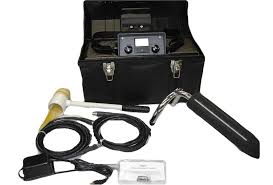
Electroejaculation is commonly used to collect semen from young bulls for evaluation at AI centers. Electric current from a car battery or main supply is modified to a 30-50 Hz frequency and delivered via electrodes set into a metal probe inserted into the bull’s rectum.
The probe is positioned over the ampullae, and stimulation is applied in increasing waves by varying the resistance. Initially, low voltage is used, followed by 15-20V, at which point semen drips from the protruded penis. The sample obtained through electrical stimulation provides a more substantial ejaculate.
Rectal Massage
This technique involves inserting a lubricated hand and arm into the bull’s rectum to locate the seminal vesicles. The seminal vesicles are stroked against the penis, causing accessory fluid to drip from the sheath.
The ampullae are then located and squeezed between the fingers and thumb. If unsuccessful, stroking toward the urethra may be attempted. A disadvantage of this method is that the samples obtained may not represent the true ejaculate.
Advantages of Artificial Insemination
Artificial insemination is used for several reasons:
- It allows the widespread use of top-quality sires, enabling more females to be inseminated across a large area without the need to transport the sire.
- It eliminates the cost and risk of maintaining a sire for a small herd or flock, making it possible to use proven, high-quality sires.
- It prevents the spread of certain reproductive diseases.
- It facilitates the use of exotic breeds that are difficult to maintain in harsh environments.
- It improves record-keeping for performance testing, as exact conception dates can be recorded.
- It coordinates well with estrus synchronization programs.
- It eliminates size differences between sires and dams.
- It allows the use of semen from sires that may have died years ago, aiding research programs.
- It helps detect sterility in bulls.
- It saves time compared to natural mating.
Disadvantages of Artificial Insemination
- It requires trained personnel.
- The equipment can be costly or unavailable to local farmers.
- The behavior of indigenous animals, especially cattle, makes AI challenging. Heat detection is difficult, and indigenous bulls may not easily mount or ejaculate using an artificial vagina.
- Poor infrastructure can hinder the supply and performance of AI.
- The extensive use of AI reduces the market for bulls.
- Poor or dirty equipment can cause infections or injuries to the dams.
- Incorrect insemination when the female is not in estrus can lead to permanent sterility, diseases like metritis, or complications such as abortion, fetal death, or maternal illness.
- If a bull used for AI carries a deleterious trait, it can spread widely, taking time to eliminate.
Preparation of Slides for Estimating Sperm Motility
All surfaces that come into contact with semen must be clean and sterile, including the glass slide, cover glass, and glass rod.
Steps for Preparing Slides to Estimate Sperm Motility
- Warm the slide carefully, ensuring it does not become too hot.
- Place one drop of warm (38°C) physiological saline (0.9g NaCl in 100ml distilled water) or sodium citrate buffer on the pre-warmed slide.
- Gently invert the tube of raw semen 2-3 times and place a small amount of semen in the saline or citrate buffer. If the semen has been diluted, saline or citrate buffer is unnecessary.
Read Also: Home-made Catfish Feed Vs Bagged Feed, Find out the Best
Diluents or Extenders for Liquid Semen
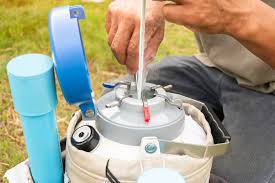
Fresh semen can be used for insemination within 24 hours of collection without dilution if stored properly. However, semen must be diluted at least four times its volume with diluents or extenders to retain fertility for at least four days. Special diluents provide a buffer to maintain constant pH, nutrients, and antibiotics.
1. Egg Yolk Citrate Diluent Procedure
i. Dissolve 2.9g of crystalline sodium citrate in 180ml of double-distilled water.
ii. Wash fresh eggs from a disease-free flock in 70% alcohol for 5 minutes, then dry and break them.
iii. Separate the yolk from the albumen completely, puncture the yolk membrane, and collect the yolk in a stainless-steel container.
iv. Mix 20ml of egg yolk with 80ml of sodium citrate buffer solution. Some workers use a higher proportion of yolk to citrate, up to equal parts.
2. Boiled Skimmed Milk Diluent Procedure
i. Heat fresh, pasteurized skim milk to 92-95°C and maintain this temperature for 10 minutes to destroy lactanin, which is toxic to sperm.
ii. Cool the milk to room temperature, add antibiotics, and store at 5°C until ready for use. Prepare this diluent a day before use.
3. Milk Glycerol Diluent
i. Dilute semen to half the final desired concentration with previously heated and cooled skim milk containing antibiotics.
ii. Cool the partially diluted semen to 5°C over 4 hours.
iii. Add an equal volume of cooled milk diluent containing 20% glycerol. Add the glycerol gradually:
a. Stepwise: 20%, 30%, and 50% of the milk at 10-minute intervals.
b. In three equal volumes at 10-minute intervals.
c. Dropwise from a separatory funnel over 30 minutes.
d. The final glycerol concentration should be 10%. The diluent is now ready for packaging and shipment.
Artificial Insemination Technique
Insemination techniques vary among animals, particularly in terms of timing relative to the onset of estrus. There are two major methods: the recto-cervical method and the older speculum method.
1. The Speculum Method
With the speculum method, semen is usually deposited only 1–3 cm into the external uterine os or the posterior portion of the cervical canal.
Equipment Required:
i. A glass or metal speculum.
ii. An inseminating tube.
iii. A light source.
Procedure:
- Insert a sterile, lubricated speculum into the vagina and locate the cervix with the aid of a light.
- Insert the inseminating tube through the speculum and into the external uterine os or the posterior part of the cervical canal as far as possible.
- Deposit the semen.
Note: There is no manipulation of the cervix to allow for deeper deposition of the semen into the body of the uterus. Due to this limitation, the fertility rate is lower. Studies have shown that fertility is about 9.7% lower with this method compared to the recto-vaginal technique.
2. The Recto-Cervical Technique
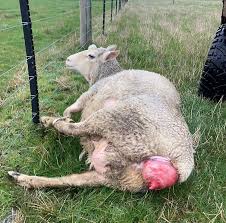
In this method, the equipment consists of an inseminating tube or catheter (5–6 mm in outside diameter and 40–45 cm long) and a syringe. The inseminating tubes are single-use or disposable and are connected directly to plastic tubes.
Procedure:
- Put on clean rubber or disposable plastic gloves and sleeves.
- Connect a sterile inseminating tube to the syringe or inseminating tube and draw in 1 mL of diluted semen.
- Place the loaded tube in a horizontal position, with the portion near the syringe end in your mouth.
- Lubricate the glove and sleeve.
- Carefully insert your hand and arm into the rectum and remove feces if necessary.
- Clean the exterior of the vulva with cotton or paper toweling, and the inside edge of the vulva lips with fresh cotton.
- Insert the inseminating tube into the vulva as far as possible without touching the inside surfaces.
- Pass the tube along the roof of the vagina to avoid the urethra until it reaches the cervix.
- With your hand in the rectum, press downward on the rectal wall, grasp the cervix, and guide the tube into the external uterine os with the aid of your thumb and little finger around the posterior end of the cervix.
- Combine gentle forward pressure on the tube with manipulation of the cervix using rotatory movements from your wrist until the desired extent of penetration is achieved.
Do you have any questions, suggestions, or contributions? If so, please feel free to use the comment box below to share your thoughts. We also encourage you to kindly share this information with others who might benefit from it. Since we can’t reach everyone at once, we truly appreciate your help in spreading the word. Thank you so much for your support and for sharing!
Read Also: Methods of Livestock Breeding in the Tropical Environment

